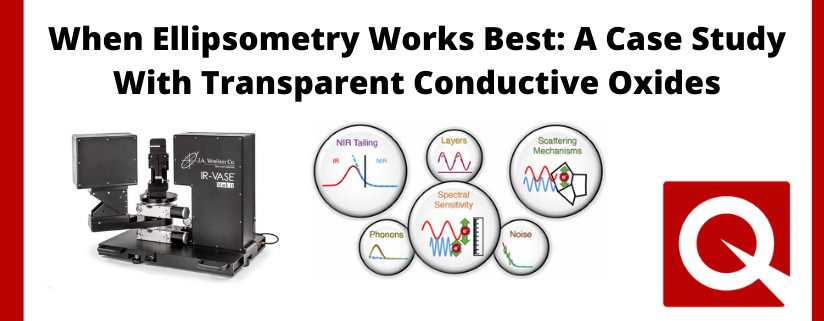
An ellipsometry case study (read the abstract below) has recently published based on the optical characterization that has been performed using a J. A. Woollam Mark II IR Variable Angle Spectroscopic Ellipsometry (VASE) at Nottingham Trent University. One of the co-authors was Nikolaos Kalfagiannis who is the main user of the IR VASE ellipsometer. Nikoalos is part of the academic team at MTIF - The Medical Technologies Innovation Facility is a dual-site research and development facility available to industry and academic institutions to support and accelerate the development of innovative medical technologies. QDUKI recently announced a collaboration with the MTIF and Nottingham Trent University. Read the full Press Release here.
The IR-VASE® is the first and only spectroscopic ellipsometer to combine the chemical sensitivity of FTIR spectroscopy with the thin-film sensitivity of spectroscopic ellipsometry. The IR-VASE covers the wide spectral range from 1.7 to 30 microns (333 to 5900 wavenumbers). It is used to characterize both thin films and bulk materials in research and industry. This rapidly growing technology is finding uses in the optical coatings, semiconductor, biological and chemical industries, as well as research labs. There are only two of these instruments in the UK including the one sited at Nottingham Trent University. This collaboration affords customers the ability to view and utilize the J A Woollam IR VASE II Spectroscopic Ellipsometer. The nature of Ellipsometry (relatively fast and non-destructive) makes it ideal for diagnostics in several sectors such as semiconductor devices, photovoltaics, nano-photonics, flat panel displays, optical coating stacks, construction materials, biological and medical coatings, protective layers as well as real-time quality control.
Case Study Abstract: As the library of potential materials with plasmonic behavior in the infrared (IR) grows, we must carefully assess their suitability for nanophotonic applications. This assessment relies on knowledge of the materials’ optical constants, best determined via spectroscopic ellipsometry (SE). Transparent conductive oxides are great candidates for IR plasmonics due to their low carrier concentration (compared to noble metals) and the ability to tailor their carrier concentration by manipulating the defect composition. When the carrier concentration becomes low enough, phonon and defect states become the dominant mechanisms of absorption in the IR spectral range, leading to near-IR (NIR) tailing effects. These NIR tailing effects can be misinterpreted for free carrier absorption, rendering NIR-visible-ultraviolet-SE (NIR-VIS-UV-SE) incapable of reliably extracting the carrier transport properties. In this work, we report the limitations of NIR-VIS-UV and IR-SE (in terms of carrier concentration) by investigating the transport mechanisms of indium tin oxide, aluminum-doped zinc oxide, and gallium-doped zinc oxide. We find regions of carrier concentration where NIR-VIS-UV-SE cannot reliably determine the transport properties and we designate material-dependent and application-specific confidence factors for this case. For IR-SE, the story is more complex, and so we investigate the multifaceted influences on the limitations, such as phonon behavior, grain size, presence of a substrate, film thickness, and measurement noise. Finally, we demonstrate the importance of identifying the IR optical constants directly via IR-SE (rather than by extrapolation from NIR-VIS-UV-SE) by means of comparing specific figures of merits (Faraday and Joule numbers), deemed useful indicators for plasmonic performance.
Download the case study here https://qd-uki.co.uk/when-ellipsometry-works-best-a-case-study-with-transparent-conductive-oxides/.